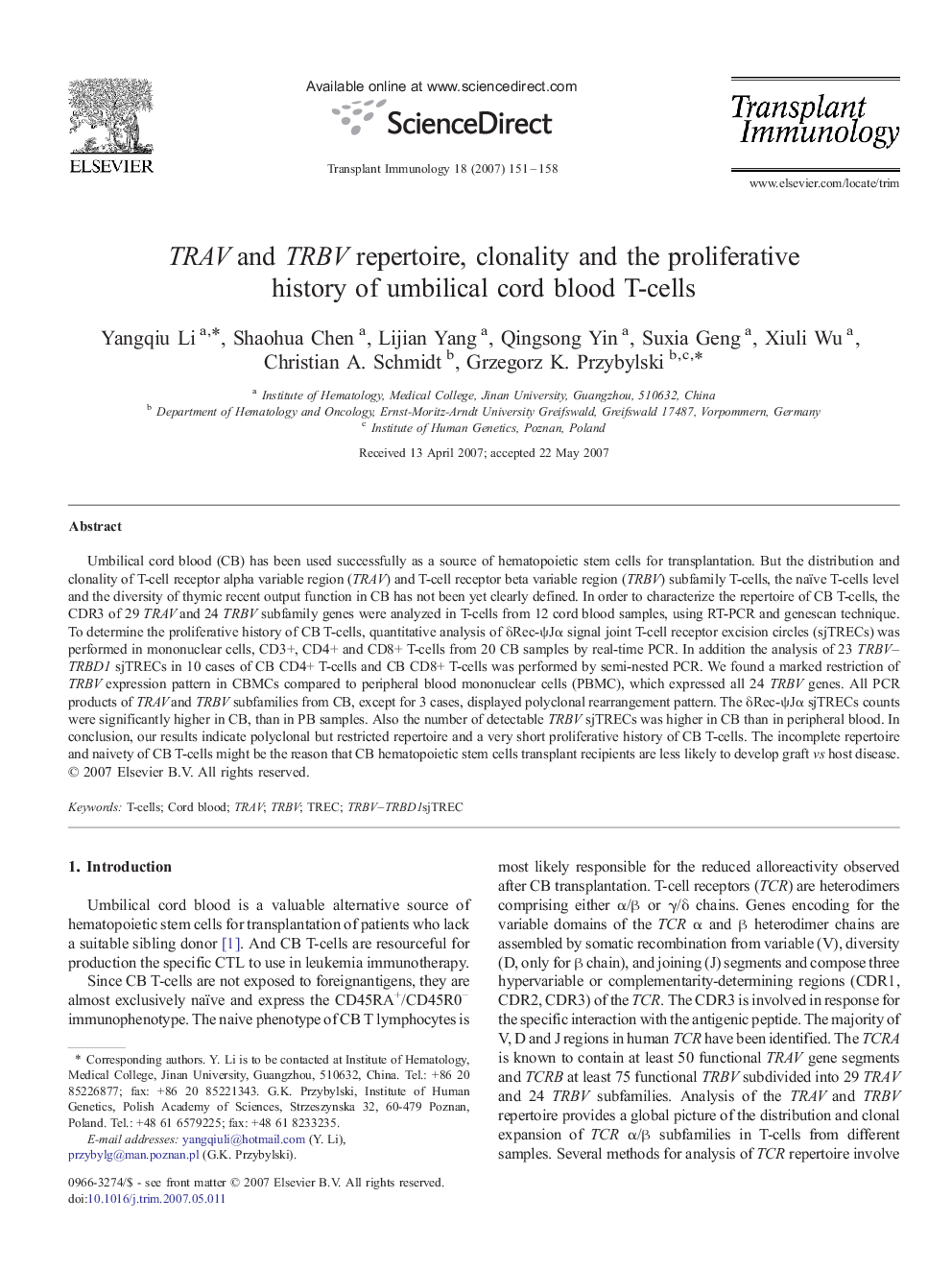| Article ID | Journal | Published Year | Pages | File Type |
|---|---|---|---|---|
| 3392485 | Transplant Immunology | 2007 | 8 Pages |
Umbilical cord blood (CB) has been used successfully as a source of hematopoietic stem cells for transplantation. But the distribution and clonality of T-cell receptor alpha variable region (TRAV) and T-cell receptor beta variable region (TRBV) subfamily T-cells, the naïve T-cells level and the diversity of thymic recent output function in CB has not been yet clearly defined. In order to characterize the repertoire of CB T-cells, the CDR3 of 29 TRAV and 24 TRBV subfamily genes were analyzed in T-cells from 12 cord blood samples, using RT-PCR and genescan technique. To determine the proliferative history of CB T-cells, quantitative analysis of δRec-ψJα signal joint T-cell receptor excision circles (sjTRECs) was performed in mononuclear cells, CD3+, CD4+ and CD8+ T-cells from 20 CB samples by real-time PCR. In addition the analysis of 23 TRBV–TRBD1 sjTRECs in 10 cases of CB CD4+ T-cells and CB CD8+ T-cells was performed by semi-nested PCR. We found a marked restriction of TRBV expression pattern in CBMCs compared to peripheral blood mononuclear cells (PBMC), which expressed all 24 TRBV genes. All PCR products of TRAV and TRBV subfamilies from CB, except for 3 cases, displayed polyclonal rearrangement pattern. The δRec-ψJα sjTRECs counts were significantly higher in CB, than in PB samples. Also the number of detectable TRBV sjTRECs was higher in CB than in peripheral blood. In conclusion, our results indicate polyclonal but restricted repertoire and a very short proliferative history of CB T-cells. The incomplete repertoire and naivety of CB T-cells might be the reason that CB hematopoietic stem cells transplant recipients are less likely to develop graft vs host disease.
